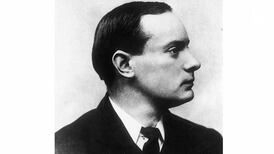John O’Grady carried the Irish tricolour at the opening ceremony of the Olympic Games in Paris 100 years ago. The Limerick man was a champion weight-thrower and bore the flag at the ceremony in the Olympic stadium on July 5th, 1924.
While Irish-born athletes had been taking part in the modern Olympic Games since they were revived in Athens in 1896 by Baron Pierre de Coubertin, they did so as members of teams such as Great Britain or the USA.
This was the first time that a national delegation had been sent to the Games from Ireland.
As the Irish athletes were making their way from Dublin to Paris to compete in the Games in late June 1924, John O’Grady, also known as Jack, was referred to in the Irish press as a “giant of the party”.
Far away, so close – Fionnuala Ward on measuring distance
The Derry man who influenced George Washington and Alexander Hamilton - Brian Maye on Hercules Mulligan
The BBC’s national question: Frank McNally on Edna O’Brien and ‘the North of Ireland’
Dictionary on the Double – Frank McNally on the enduring literary life of Patrick Dinneen
This was not only down to his stature but it was also due to his many achievements in his chosen sport.
Born in Ballybricken, Co Limerick, in February 1892, he stood at 6 foot 4 inches tall and weighed in at over 18 stone. His chest measured 54 inches.
To give an idea of the size of the man, a story was told in the press of a shopping expedition while in Scotland attending an international competition. He informed the surprised salesperson in the store that he took a 22½ inch collar. Two normal sized collars were stitched together and adjusted to accommodate his large proportions.
Despite his formidable appearance, however, O’Grady earned the nickname of “The Baby”. This was due to his calm and friendly demeanour. He was described as being “as modest and smiling as a child”.
One of his first weight throwing championship meetings in Ireland was at Mallow Sports in 1913. In Limerick in 1922, O’Grady set a new record by beating the American Pat Ryan’s record for putting a 42 lb weight. He beat Ryan’s record by over five inches, reaching 29 foot 10.5 inches.
It is not entirely surprising that O’Grady took up the sport of weight throwing as it is believed to have its origins in Ireland. The roth cleas or wheel feat at the ancient Tailteann Games has come to be seen as a forerunner of the sport.
It is said that it started off with a cartwheel with a handle attached to it being whirled around the head before being thrown. This was replaced by a stone or a stick, before being replaced by a blacksmith’s hammer and finally by a rounded hammer.
There was also a bit of a family history in the sport as his uncle Ned O’Grady won several Irish and world titles in weight throwing.
It was at the London Games of 1908 that the tradition of athletes parading behind their nation’s flag at the Olympic Games opening ceremony began.
Directly behind O’Grady was the Kildare-born high-jumper Larry Stanley, who led out the Irish team.
It consisted of runners in various categories, tennis players, boxers, a discus thrower and a team of water polo players. They marched in 25th position amongst the other competing nations. Altogether, 44 nations took part in the Games with over 3,000 elite amateur athletes participating.
O’Grady died at his home on Saint Alphonsus Terrace in the city on November 24th, 1934, at the age of just 42 years. A monument, paid for by subscription from individuals and sports clubs in Limerick and Dublin, was erected in his honour. One of those whose name appeared on the list of donors was O’Grady’s teammate at the Paris Olympics, the discus thrower PJ Bermingham. The limestone and steel sculpture, made by local sculptor T Keane, is in the shape of a 56lb weight resting on a pedestal.
Located on the Fairgreen at the end of Mulgrave Street, it sits at the junction between the Ballysimon Road and the Old Cork Road. The monument was unveiled by Francis J O’Dea of the National Athletic and Cycling Association in November 1937. In attendance at the unveiling was O’Grady’s widow and civic leaders, including the mayor and several TDs.
The inscription on the pedestal reads as follows: “Erected by his admirers in recognition of his phenomenal athletic ability and as a lasting tribute to his sportsmanship”. It includes his date of birth and death and mentions his three world records and seven national championships. The inscription concludes that it would be hoped that O’Grady would “for ever serve as a model for those who seek to maintain Ireland’s athletic prestige”.
Since its unveiling, sporting enthusiasts and residents of the Treaty City have taken it to their hearts. Members of An Óige met there in the 1950s before undertaking their regular cycling trips in the locality. In the 1970s, youngsters competing in the Community Games in the city marched from there to the games and it featured on their medals.















